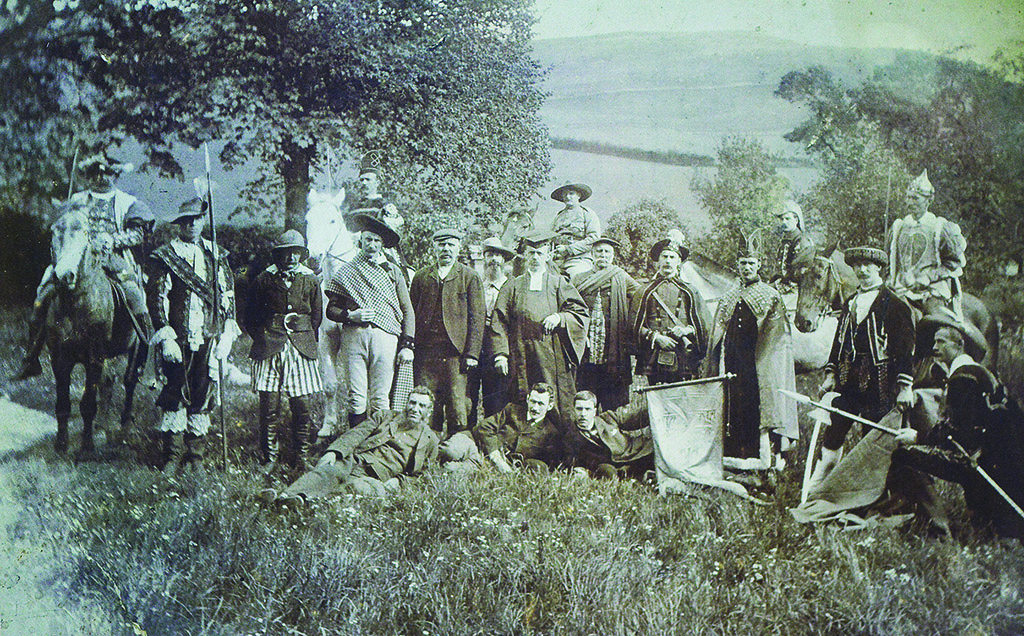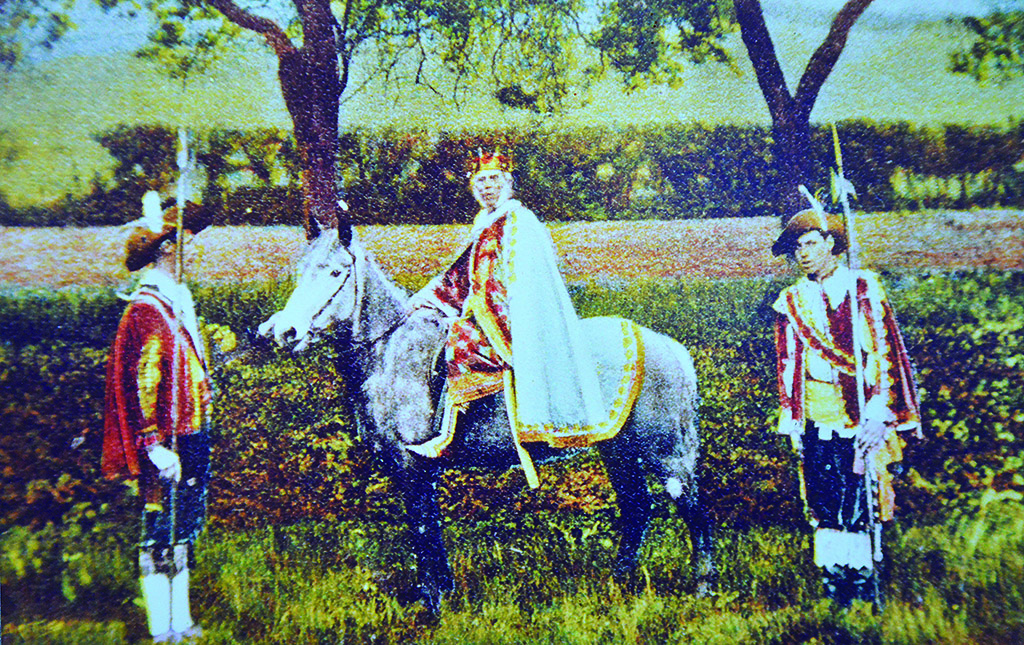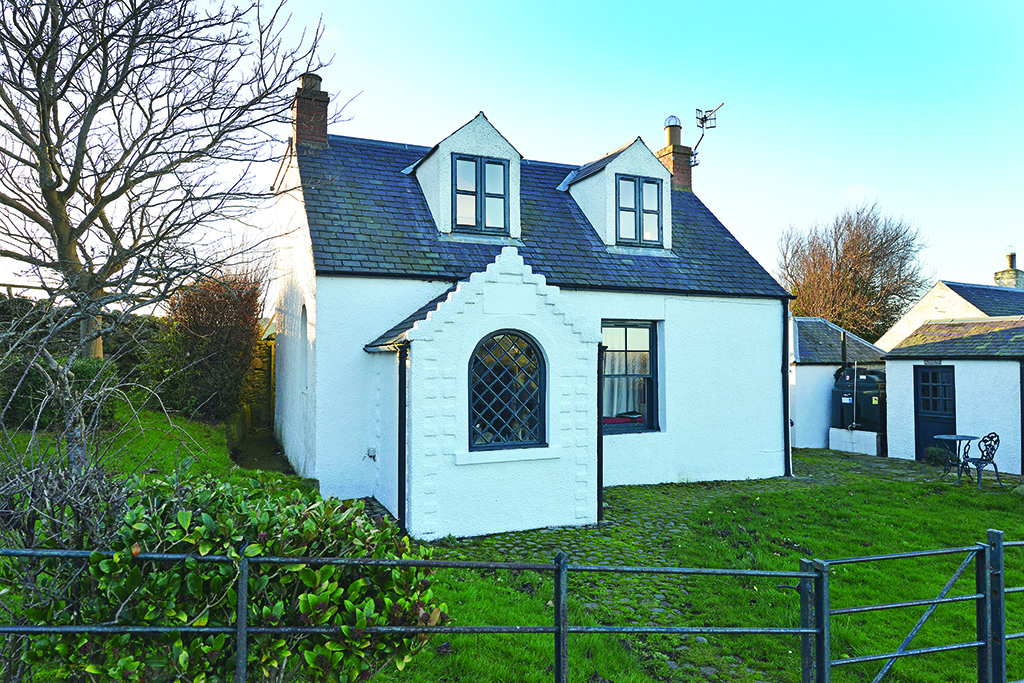Over a century ago, in an elaborate ceremony in the Borders witnessed by a crowd of 10,000 spectators that included Lords and Ladies, the last Gypsy King of Scotland was crowned.
On Whit Monday, 30 May 1898, some 10,000 people gathered in the Borders village of Kirk Yetholm for the coronation of Scotland’s Gypsy King.
It was a huge number of people for the time and the elaborate ceremony, attended by lords and ladies, was reported in newspapers across Britain. But who were the Gypsy Kings of Scotland and where are they now?
Despite the size of the congregation and the pomp surrounding the coronation, the Gypsy Kings of Scotland have passed out of living memory – or perhaps these mysterious people have decided to retreat once more into their own ways and refuse to tell the gorgies (the Romany word for non-gypsies) the truth about the current Gypsy King.
Gypsies were first recorded in Scotland in 1492, the same year that Columbus landed in the West Indies, in the reign of James IV. The word ‘gypsy’ is derived from ‘Egyptian’, but the people themselves are more likely to have been nomadic Roma from northern India. Indeed, by 1492 they had already been travelling in Europe for hundreds of years and were an accepted part of society.
One gypsy in particular found favour with King James V. In 1539 the Stuart monarch granted John Faa the right to call himself King of the Gypsies. Historical records show that there was a writ of the Privy Council recognising the right of a ‘John Faw’, the ‘Lord of Litill Egypt’ to rule and enforce laws over his ‘people’. There was another writ, dated February 1540, also signed by James V, which records the granting of protection to ‘our lovit Johnnie Faa, Lord and Erle of Littil Egipt’.

Some of the artfully dressed ‘courtiers’
For 100 years or so, the system seemed to work. Gypsies were accepted as a travelling people, selling goods and telling fortunes, and when there was a dispute with the settled population it was resolved by the Gypsy King. Then, in 1695, the gypsies of Scotland were afforded a unique opportunity – to have some land of their own.
Captain Bennet, the Laird of Kirk Yetholm in the Borders, was fighting in the Battle of Namur in Belgium when he was saved from certain death by a gypsy. As a reward, Bennet promised the man and his tribe some land on his estate near Kelso.
So began the gypsies’ association with the Borders. The ‘gypsy palace’ was built in Kirk Yetholm, where families could gather regularly and where many lived, at least in winter. Even though the ‘palace’ is a small building, it was grand enough for the time. It had the added advantage of being in the borderlands between England and Scotland, making it easier to escape the law of whichever country you are run ning from. And the gypsies certainly liked to play fast and loose with the law.
The first recorded Gypsy King in Yetholm was Patrick Faa, whose ‘rule’ spanned the 1730s and ’40s. His Queen was the six-foot-tall Jean Gordon who, it is believed, was the inspiration for Sir Walter Scott’s character Meg Merrilies in the novel Guy Mannering. Patrick, however, was eventually deported to the Americas for theft. Three of his sons were hanged for stealing sheep, and Jean was drowned by an angry mob in Carlisle for voicing her support for Bonnie Prince Charlie. So even though the gypsies had a home, they were still outside ordinary society.
What happened in 1898 that suddenly made the gypsies of Scotland front-page news? The most likely explanation is that it is one of the earliest recorded examples of a massive PR stunt. In the late 1800s, hostelries and inns in the Scottish Borders relied heavily on the tourist trade, as leisured southerners followed Queen Victoria’s example by holidaying in Scotland. What better way to attract your average romantic Victorian tourist than with some gypsy melodrama?
Queen Esther Faa Blythe was already famous and her ‘palace’ was a must-stop en route to the Highlands, so when she died it was decided that the new King would be crowned in style to capitalise on the popularity of fortune telling and other gypsy lore.

The King on his trusty steed
Charles Faa Blythe, now 73, was persuaded to take the crown. According to an interview by the photographer Alasdair Alpin MacGregor in 1935 with a resident of Yetholm called Robert Christie, there were ‘ten thousand folk there’ and ‘two hundred cuddies (horses)’.
Christie said Charles was crowned on the Green of Kirk Yetholm after the gypsies wended their way up the Loanings towards the tract of land known as The Common. ‘There, they put a tin crown on him and broke a bottle of whisky over his head, then bound a hare round his neck.’ Christie went on to suggest that the hare was indicative of the ancient art of poaching, which the gypsies regarded as their birthright.
Charles was crowned by the blacksmith, who acted in his role as ‘Hereditary Archbishop of Yetholm’. Mr Watt, the grocer, dressed in a spectacular costume, then read out a speech on the new King’s behalf: ‘I am commanded by His Majesty, the King of the Yetholm Gypsies, to thank his loyal subjects for the honour conferred on him this day and to say that it will be his honest endeavour to rule his people wisely and well, and he trusts that his subjects in the villages of Town and Kirk Yetholm will live in peace and prosperity under his sway.’
The coronation ceremony was really a pageant, with all the locals dressing up for the benefit of the photographs shown in this article. The spectacle was even reported in the Hawick News: ‘The ceremony took place in an enclosure set up in front of Renalson’s Inn and a rich harvest of shillings was gathered in for admission to it. A throne was improvised and eight or 10 armchairs arranged in a row, with a small round table as a centre-piece, on which lay a faded cushion… [There were] various other participants, who had been outfitted by a Glasgow theatrical costumier in fancy costumes remarkable for their inappropriateness. Several prominent families were present, including Lady Stratheden and Campbell, and Sir George Douglas.’
Not all of it was Victorian romance. There was a genuine scuffle over who the Gypsy King should be, with at least two other claimants within the Blythe clan.
In the end, Charles Faa Blythe reigned until his sudden death on 21 April 1902. Many of the obituaries were critical of the ‘sham coronation on Yetholm Green’, and when it was suggested that Charles’s brother Robert should succeed him, a correspondent in the Edinburgh Evening Dispatch wrote: ‘Surely the ancient house of Faa can bring someone more worthy to the throne of Charles than this person, whose acts have ever been enough to put the Romany race to the blush.’

The Gypsy Palace, now a holiday cottage (Photo: Angus Blackburn)
Whoever was chosen as the new Gypsy King, there was no public coronation – and indeed there has not been another ceremony in Kirk Yetholm since.
So where are the Scottish Gypsy royal family now? Many members, it would appear, are spread all around the world. According to the current owners of the Gypsy Palace, now a two-bedroom holiday cottage in Kirk Yetholm, a steady stream of visitors – mostly from the US or Australia who boast connections to the Faa Blythe clan – visit their ancestral home.
Some gypsies have gone on to reach positions of great power. Bill Clinton, the former President of the United States, was born William Jefferson Blythe III and has never denied his Romany heritage.
In the local area, many families still have links to the Scottish gypsies, but intermarriage and perhaps embarrassment means that they are more reticent than their cousins abroad about celebrating their heritage.
In 2011, the Daily Mail claimed that Ladislav Stokja was crowned as Gypsy King of England.
But the true successor to the Scottish Faa Blythe crown is more difficult to pinpoint. There are rumours of an Edinburgh housewife or a young man from ‘deepest darkest’ Scotland claiming the Romany crown – or perhaps the King of Scotland’s gypsies is living in Las Vegas or Brisbane.
One thing is certain: the Gypsy King or Queen of Scotland still exists. The big question is: who are they?
(This feature was originally published in 2015)
TAGS

